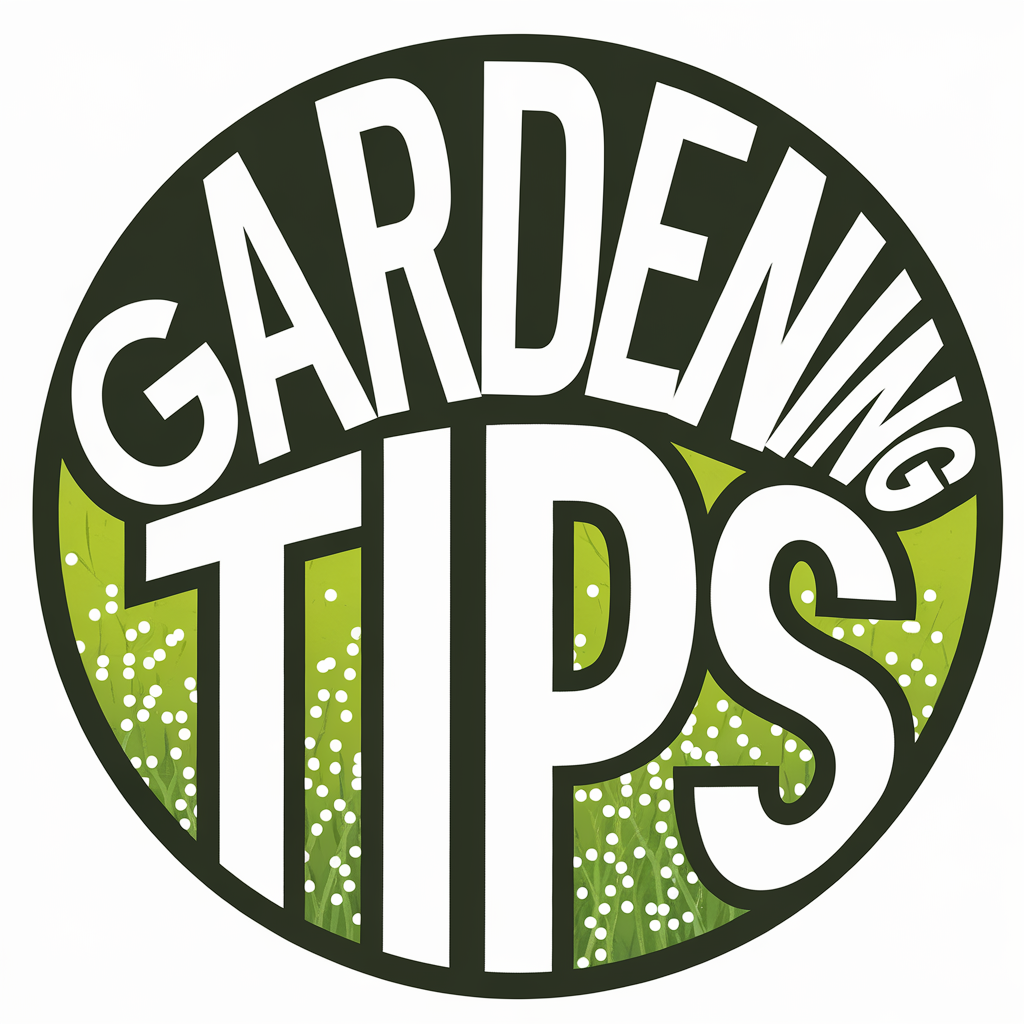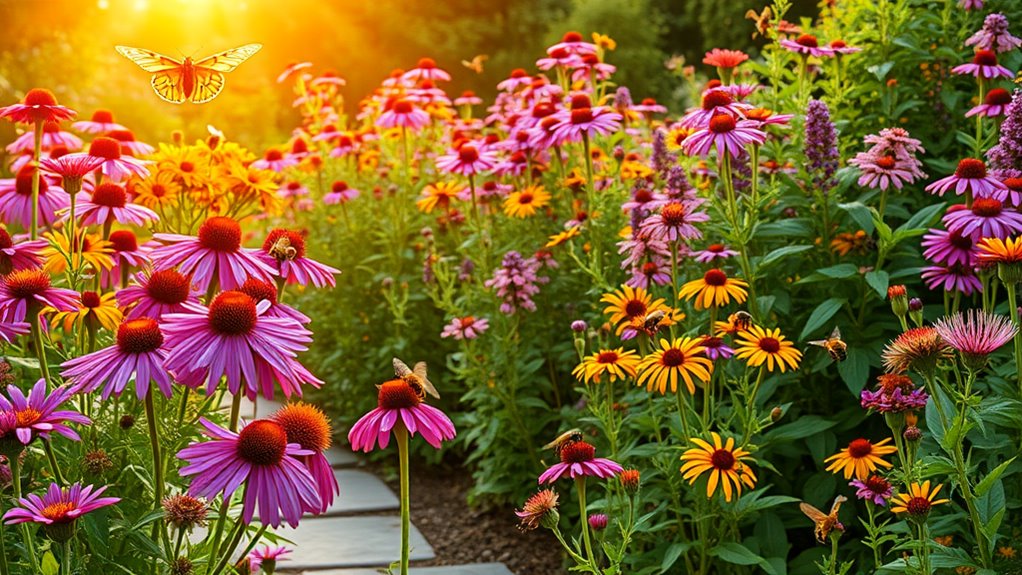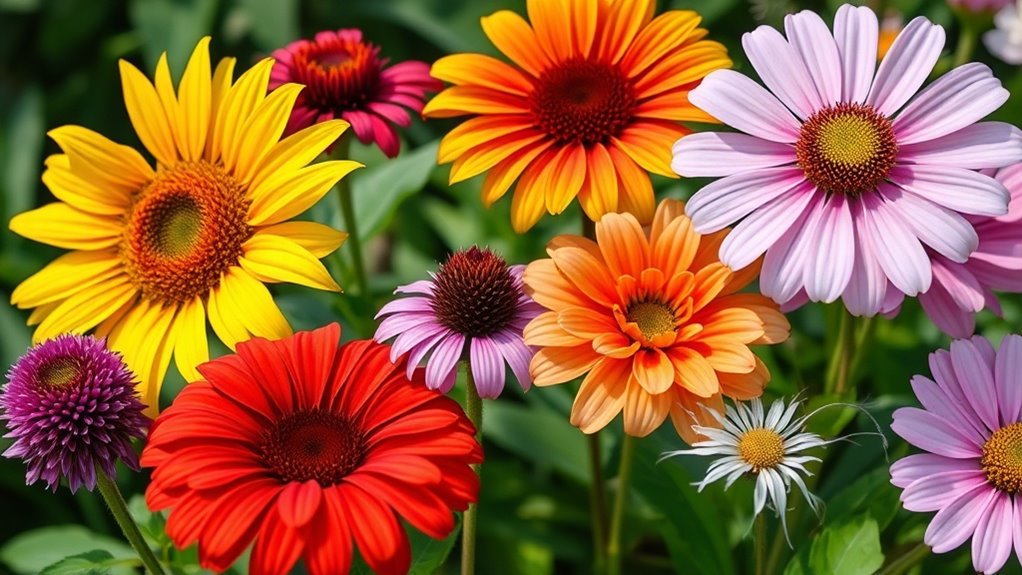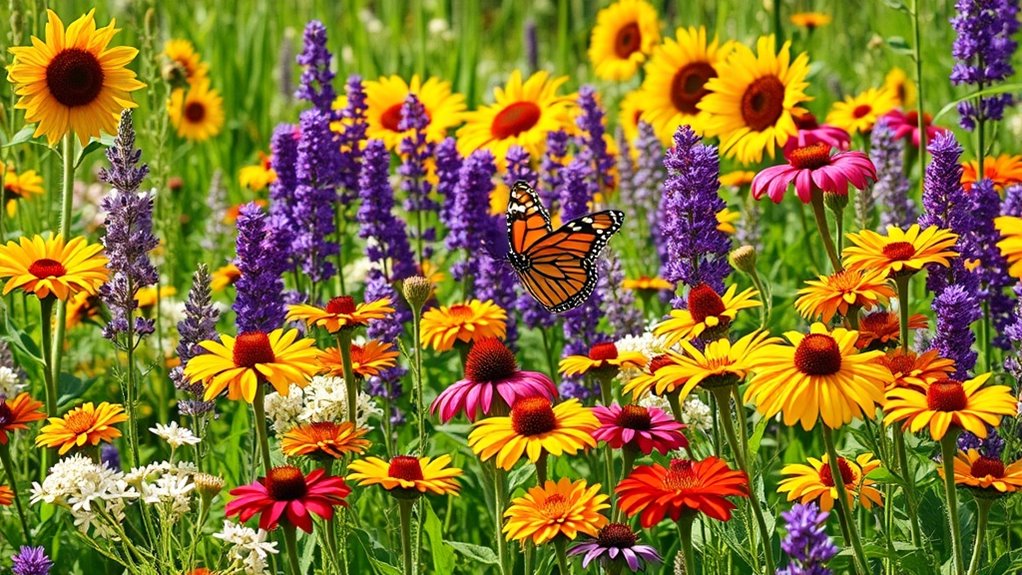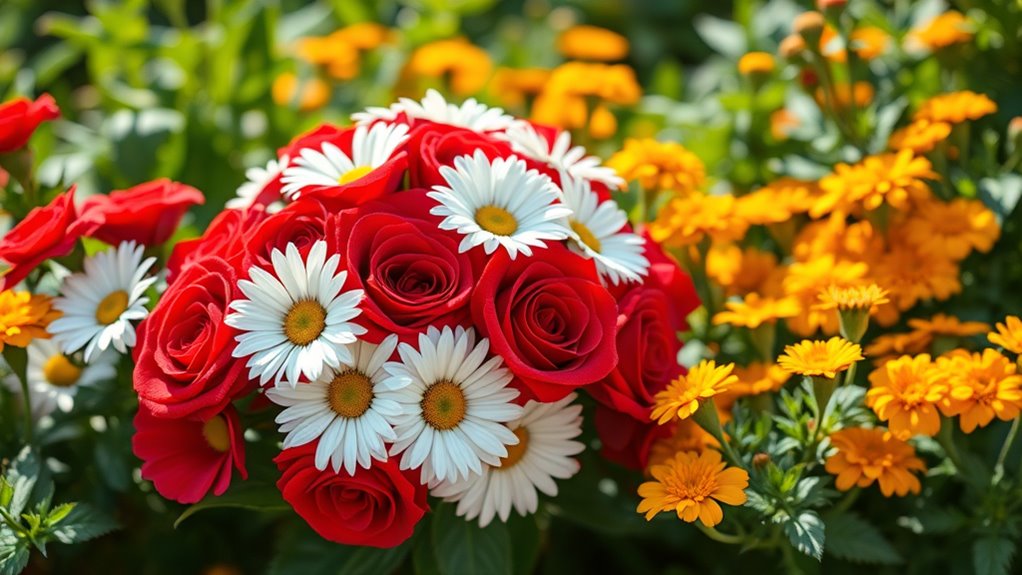How I Created a Pollinator Paradise With Just a Few Plants
Imagine transforming a small corner of your garden into a vibrant haven for pollinators. With just a few native plants, like coneflowers and milkweed, you can create a habitat that thrives. By carefully selecting and grouping flowers, you’ll attract bees and butterflies, essential for our ecosystem. But it doesn’t stop there; maintenance and habitat diversity are crucial. Curious about how to make your own garden buzz with life? Let’s explore the next steps together.
Choosing the Right Plants for Pollinators
How can you create a garden that truly attracts pollinators?
Start by choosing the right pollinator flowers. Select native plants like coneflowers, asters, and milkweed, which provide nectar and pollen. Vibrant colors and varied bloom times will draw in bees, butterflies, and hummingbirds. Group these flowers in clusters to make foraging easier, ensuring your garden buzzes with life all season long. Additionally, incorporating specific flower varieties known to attract butterflies will enhance your garden’s pollinator paradise.
Creating a Diverse Habitat
To create a welcoming space for pollinators, incorporating diverse habitats is just as important as planting the right flowers.
Think about mixing native grasses, shrubs, and ground cover to provide shelter and nesting sites. Leaf litter and small brush piles can enhance insect habitats while attracting birds. This variety ensures different species flourish, fostering a balanced ecosystem that supports all your buzzing friends. Additionally, understanding optimal watering techniques is vital to ensure your plants thrive in this diverse habitat, providing essential hydration for both flora and fauna.
Planting Techniques for Success
While choosing the right plants is crucial, employing effective planting techniques can significantly boost your pollinator garden’s success. Here are some key methods to consider:
-
Dig a generous hole, allowing roots to spread freely and thrive.
-
Group plants in clusters to create vibrant, inviting habitats.
-
Water thoroughly right after planting to ensure moisture reaches deep down.
Your garden’s growth will reflect the love and effort you put into it. Additionally, it’s important to regularly assess soil health to ensure optimal conditions for your plants.
Maintaining Your Pollinator Garden
As your pollinator garden begins to flourish, you’ll find that maintaining its health is just as vital as the initial planting.
Keep an eye on weeds—they can compete for resources. Regularly water during dry spells, and deadhead faded blooms to encourage new growth.
Add organic mulch to retain moisture and nourish soil, ensuring a vibrant, welcoming haven for pollinators all season long. Mulching is a simple yet powerful technique that can help transform your garden, keeping it consistently moist and thriving.
Observing and Enjoying Your Garden’s New Visitors
Your garden quickly transforms into a vibrant ecosystem, buzzing with life as new visitors arrive.
Watching pollinators flit about can ignite a sense of wonder and connection to nature.
- The delicate humming of bees collecting nectar
- Bright butterflies dancing among flowers
- A serene moment, feeling the sun’s warmth on your skin
Relish these moments; they highlight the beauty of your garden’s newfound life. Engaging with these visitors can also help you understand natural pest control strategies that create a balanced environment.
